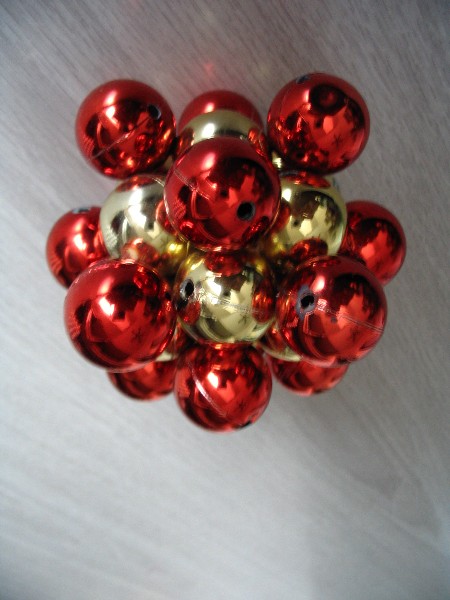
Quantum Vacuum Engineering
Low Energy Nucleonics
Recent development of the Hydreno atomic model and compelling experimental evidence invoking ultra-close range Casimir forces has legitimized a lengthy list of low energy induced fusion and cold fission reactions. Generally considered impossible according to conventional nuclear theory, these novel reactions arise from coherence of Zero-point from the quantum resulting in stable daughter products without radioactive emissions. A wealth of supporting data has already been reported in the peer reviewed literature including Fusion Technology.
Low energy nuclear reactions do not require the high input energies necessary for most thermonuclear reactions. They even occur widely in nature, accounting for all manner of mass balance anomalies in agronomy, medicine and elsewhere that have been documented for centuries. Due to the entrenched constraining dogmas of high energy physics and Lavoisier chemistry, this remains a wide open area for many astounding developments including production of valuable materials from toxic wastes, fusion of atmospheric carbon, water and oxygen synthesis, neutralization of nuclear fuel waste and myriad of other applications.
Principles of Low Energy Induced Nuclear Reactions:
Low energy induced nuclear reactions generally utilize the tremendous radiation pressures that can be developed through implosive, radial coherence of the Quantum Vacuum flux through ultra-close range Casimir effects. Such effects are created by various means, including plasma condensation and cavitation bubble collapse within dielectric or conductive fluids. It is, in fact estimated that the absolute radiation pressure (not fluid pressure) of the ZPE flux of "empty" space exceeds 1020 kPa by a wide margin.
This tremendous background pressure of the vacuum can be brought to bare on minute volumes of space initiated with small input energies. The resulting radial implosion of the ubiquitous radiation pressure of the energetic vacuum effectively replaces the high powered laser array normally employed in inertial confinement fusion processes. In effect, the proprietary ZIPP fusion process constitutes a form of Passive Inertial Confinement (PIC) fusion.
The all pervasive radiation pressure of the vacuum can also be brought to bare on large unstable nuclei causing deterministic cold fission reactions which do not result in radioactive daughter products or the radioactivity that normally attends stochastic thermonuclear reactions, which evidently disrupt individual nucleons. Such cold fission reactions are attended by prompt conversion of excess neutrons to form hydrenos according to the Hydreno Atomic model.
Scalar radiations and plasmas can be employed to directly alter the isotropic energy distribution of space causing destabilizing effects on targeted or enveloped matter resulting in a variety of anomalous phenomenon, including cold fissions of heavy metals and accelerated nuclear decay of radioactive isotopes, resulting in stable end products.
Directory Of Low Energy Nucleonics:
Here you will find a growing list of information and links to other sites dealing with the subject of Low Energy Nucleonics. In the absence of active links simply use these terms to conduct your own search.
¨ ZIPP Fission and Fusion
¨ Passive Inertial Confinement (PIC) Fusion
¨ Plasma Vortex Cold Fission Reactor (RIPPLE / GEET)
¨ Bionuclear Fusion and Fission (Kervran Reactions)
¨ Chemonuclear Fusion and Fission
¨ High Density Charge Clusters (HDCC)
¨ Plasma Injected Transmutation (PIT)
¨ Low Energy Induced Fusion
¨ Sonofusion (Oak Ridge Nuclear Labs)
Development Resources:
To assist in the development and application of Low Energy Nucleonics, a variety of consulting services can be provided on any related topic with particular emphasis on Nuclear Waste Treatment applications (now numbering over a dozen).
© 2006 -2012
About The Author
Mark Porringa is a professional engineer and decorated "veteran" of the Nuclear industry including 15 years at a major research reactor.
Frustrated with the growing limitations and indeterminate nature of nuclear science and engineering, he began a 10 year quest that culminated in the development of a new atomic model.
His low energy fusion and cold fission experiments have been reported in the peer reviewed literature, including presentations before the prestigious Louis de Broglie Foundation in Paris and the Canadian Nuclear Society.
Mark Porringa is a professional engineer and decorated "veteran" of the Nuclear industry including 15 years at a major research reactor.
Frustrated with the growing limitations and indeterminate nature of nuclear science and engineering, he began a 10 year quest that culminated in the development of a new atomic model.
His low energy fusion and cold fission experiments have been reported in the peer reviewed literature, including presentations before the prestigious Louis de Broglie Foundation in Paris and the Canadian Nuclear Society.
Science & Engineering - Out of the Box
QVE DIRECTORY

Aluminum Nucleus
LNH ATOMIC MODEL
LNH ATOMIC MODEL
Updated Jan 21/12

































